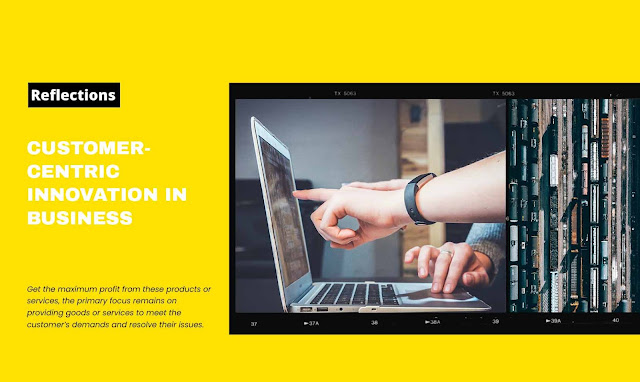What is Customer Centric Innovation?
Customer-Centric Innovation in Business
A product is introduced in the market when an organization assesses a gap between the needs of the consumer and the market that they can fill. Although businesses want to get the maximum profit from these products or services, the primary focus remains on providing goods or services to meet the customer’s demands and resolve their issues.
What is customer-centric innovation?
Customer centric innovation is product innovation, with the customer being at the heart of the process. In this approach of business innovation, the focus is given to customer needs, satisfaction and feedback. A customer-centric innovation would imply that the organization will actively work to create better products for its consumer base based on the following questions:
- What do customers like about our product?
- What can we do better?
- What is an unnecessary or not updated feature you would recommend about our product?
How to create customer-centric innovation?
To create a customer-centric innovation approach in business, you need to use an offense strategy. The offense strategy has three phases:
Establishing a deep relationship with core customers:
The organization’s Customer Research & Development team must identify core customer sections and develop mutually beneficial value propositions reflecting the complete customer experience, including products, services, and any form of interaction with the company. The team needs to focus on customer subgroups or subsections to narrow the gap between customers’ desires and the product or services the company offers and generate additional profits.
Extending the number of customers beyond the core:
This segment is further divided into two phases-
a. Extending capabilities:
The customers will use or experience products and services by an organization during different life stages. Each of these experiences will differ from the other. It means that the needs of the customer base will be different each time. The goal of a company must be to extend product capabilities to address these diverse and ever-changing needs.
b. Extend segments:
The second phase of this step requires the R&D team to identify the groups with similar needs to create subgroups. They can then be used to determine the primary needs and requirements and create specific features concerning these subgroups.
Stretch into new customer realms:
A company will continually keep extending its borders. In customer-centric innovation approach, this can be done in two steps:
a. Stretch Capabilities:
The R&D team will extend the scope of the customer base, thus stretching the scope of needs and requirements. The organization must now come up with innovation to serve the customer base.
b. Stretch segments:
In this step, the organization will look into interdisciplinary sections of the society where they can apply the innovative services or products they offer and have no direct link with.
Why is Customer-centric innovation necessary for business?
Customer-Centric innovation can boost profits in virtually every business that deals with direct sales access to large numbers of customers.
Let us look at two examples of customer-centric innovation helping the business grow:
Buffer:
Buffer keeps their audience in the loop with what’s happening behind the curtain. They were hacked in 2013, and instead of trying to hide it and quietly patch the damage. They openly accepted the issue and shared how they planned to fix it. Customers appreciated their transparency which further cemented their reputation as a customer-centric company.
3M:
3M is a company that has been associated with innovative products to solve a specific customer problem. 3M has opened Innovation Centres where customers can visit, explore new ways of thinking, collaborate on designs, and test new products.
How do MIT ID Innovation courses promote innovation designs and services?
Customer-Centric innovation benefits financial services firms, hotels, consumer goods to manufacturing firms. We believe that innovation is not only limited to product innovation but extends to the individual’s capability to connect with their ecosystem. MIT ID Innovation offers courses in innovation that focus on upskilling future leaders for such path-breaking innovation techniques.


.jpg)
Comments
Post a Comment